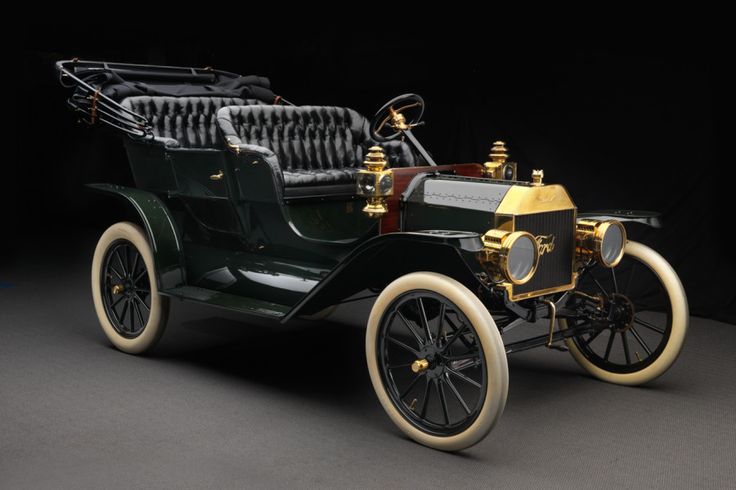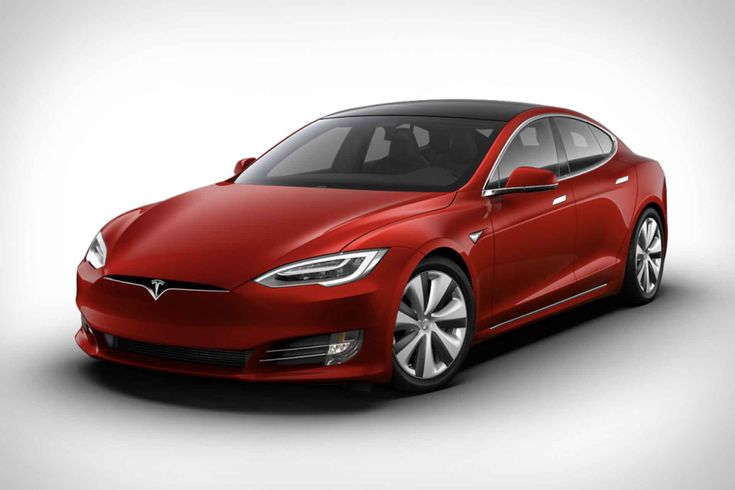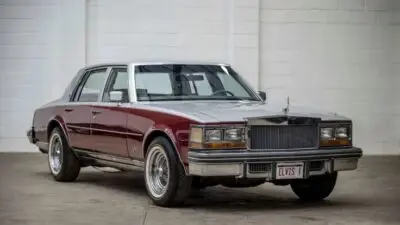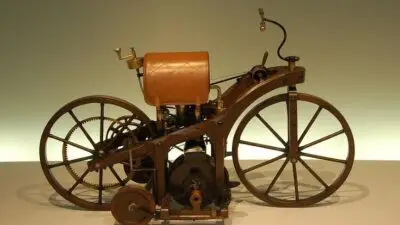Cars have come a long way from their humble beginnings as “horseless carriages” to the sophisticated machines we drive today. The journey began in the late 19th century when inventors sought alternatives to horse-drawn transportation. The evolution of automobiles represents one of humanity’s most significant technological transformations, changing not just how we travel but reshaping our cities, economies, and daily lives.

This remarkable transformation didn’t happen overnight. Early automobiles were luxury items for the wealthy, often unreliable and difficult to operate. Over decades, computerization, fuel injection systems, and hybrid engines revolutionized how cars were built and operated. The path from horse-drawn carriages to modern electric vehicles shows human ingenuity at its finest.
Today’s automobiles bear little resemblance to their ancestors, featuring advanced safety features like anti-lock brakes and electronic stability control. Modern cars are computers on wheels, with some even capable of driving themselves. This continuous innovation demonstrates our persistent drive to improve transportation, making it safer, more efficient, and more environmentally friendly.
Key Takeaways
- Automobiles evolved from simple horseless carriages to complex machines with computer systems that have fundamentally transformed society and human mobility.
- Technological advancements in engines, safety features, and materials have steadily improved cars’ performance, reliability, and efficiency over the past century.
- The car’s evolution reflects broader societal changes and continues today with electric and autonomous vehicles addressing environmental and safety challenges.
The Dawn of the Automobile

The automobile’s earliest days saw a rapid transformation from crude horseless carriages to revolutionary production methods. This period established the foundation for modern car manufacturing and accessibility.
From Horseless Carriages to the Model T
The concept of a self-propelled vehicle dates back centuries, but practical horseless carriages only emerged in the late 19th century. Early automobiles were essentially carriages with engines attached, lacking standardization and affordability.
German inventors Karl Benz and Gottlieb Daimler developed the first practical automobiles around 1885-1886. These vehicles featured gasoline-powered internal combustion engines, but remained luxury items for the wealthy.
By 1908, the landscape changed dramatically with the introduction of the Model T by Ford Motor Company. Unlike its predecessors, the Model T was designed for the average American.
Its simple, rugged design made it suitable for America’s rough roads. Priced initially at $850 (about $25,000 today), the Model T brought automobile ownership within reach of middle-class families for the first time.
Henry Ford and the Assembly Line
Henry Ford revolutionized manufacturing with his moving assembly line in 1913. Before this innovation, cars were built individually by skilled craftsmen, making them expensive and time-consuming to produce.
Ford’s assembly line broke production into simple, repetitive tasks performed by specialized workers. This system dramatically reduced the Model T’s production time from 12 hours to just 93 minutes per vehicle.
Mass production allowed Ford to continuously lower prices; by 1925, a Model T could be purchased for as little as $260 ($4,000 today). This automotive revolution transformed America’s landscape and economy.
Workers earned higher wages ($5 per day, double the average), creating a new consumer class. The assembly line concept soon spread to other industries, fundamentally changing global manufacturing practices and establishing principles still used today.
Advancements in Automotive Engineering

The evolution of automotive engineering has been marked by revolutionary technological breakthroughs that transformed primitive vehicles into sophisticated machines. These innovations have focused on improving power, efficiency, safety, and environmental impact.
The Rise of the Internal Combustion Engine
The internal combustion engine became the beating heart of automobile evolution, replacing steam and electric power in early vehicles. Karl Benz’s 1885 Motorwagen featured a single-cylinder four-stroke engine that delivered unprecedented mobility.
By the 1920s, Henry Ford’s Model T brought the efficient four-cylinder engine to the masses. This democratized transportation and established the combustion engine as the dominant technology.
The diesel engine, invented by Rudolf Diesel in the 1890s, offered better fuel efficiency and durability. It found widespread use in commercial vehicles, providing higher torque at lower speeds.
Engine innovations continued with fuel injection systems replacing carburetors in the 1980s, transforming how cars were built and operated. Modern engines now incorporate turbochargers, variable valve timing, and direct injection to balance power with efficiency.
Evolution of Automotive Design
Automotive design evolved from simple “horseless carriages” to aerodynamic machines optimized for performance and style. Early vehicles merely attached engines to carriage bodies with little consideration for aerodynamics.
The 1930s introduced streamlined designs, with rounded edges replacing boxy shapes. This period marked the beginning of wind tunnel testing to reduce drag and improve fuel economy.
Post-war cars featured iconic styling elements like tailfins and chrome accents. By the 1970s, computers transformed cars with Computer-Aided Design (CAD) enabling more complex shapes and precise engineering.
Modern automotive design incorporates:
- Lightweight materials (aluminum, carbon fiber)
- Crumple zones for safety
- Modular platforms for manufacturing efficiency
- Aerodynamic optimization for reduced drag
Electrification and Alternative Fuel
Electric vehicles have experienced a renaissance after initially losing to gasoline cars in the early 1900s. Tesla’s introduction of the Roadster in 2008 demonstrated that EVs could combine performance with practicality.
Battery technology has been crucial to this revival. Lithium-ion batteries have replaced lead-acid, dramatically improving energy density and range. Modern EVs now achieve ranges exceeding 300 miles on a single charge.
Beyond pure electric power, the industry has explored various alternative fuel vehicles. Hybrid technology, pioneered by the Toyota Prius in 1997, bridged the gap between conventional and electric propulsion.
Automotive fuel options have expanded beyond gasoline and diesel. Technological advancements have allowed for:
- Hydrogen fuel cells that produce only water vapor
- Biofuels like ethanol from renewable sources
- Synthetic fuels that can be carbon-neutral
- Natural gas as a cleaner-burning alternative
Impact on Society and Economy

Cars fundamentally changed how people live, work, and interact with their communities. The automobile shifted economic landscapes, reshaped cities, and created one of the world’s largest industries.
Car Ownership and American Prosperity
The rise of affordable automobiles transformed American society in the early twentieth century. When Ford Motor Company introduced the Model T in 1908, its assembly line production made cars accessible to middle-class Americans for the first time. Car prices dropped from luxury items to everyday necessities.
This accessibility sparked unprecedented prosperity. Families could live farther from workplaces, creating suburbs and expanding economic activity beyond city centers. The “automobile age” aligned perfectly with American ideals of freedom and individualism.
Car ownership became a symbol of economic success in American culture. By the 1950s, nearly 60% of American households owned at least one vehicle—a dramatic shift from just decades earlier when cars were rare luxuries.
The automobile industry itself created millions of jobs, from manufacturing to sales, service, and roadway construction. This economic engine powered much of America’s middle-class growth throughout the mid-twentieth century.
Urbanization and Economic Shifts
Automobiles accelerated urbanization while paradoxically enabling suburban sprawl. Cities expanded outward as commuting became practical, creating entirely new economic zones and housing patterns.
The movement of people transformed land values. Downtown areas initially boomed with commercial development, while residential growth shifted to peripheries. This restructuring created new wealth opportunities but sometimes disadvantaged those unable to afford vehicles.
Rural economies faced significant disruption. Farm products could travel farther to market, but agricultural communities often lost population to cities with manufacturing jobs. The automotive industry concentrated in specific regions, creating economic powerhouses like Detroit.
Highway systems, particularly after the 1956 Federal-Aid Highway Act, connected previously isolated communities to broader markets. This infrastructure investment served as economic stimulus during difficult periods like the Great Depression and post-war transitions.
The Automotive Industry and Global Markets
The automobile industry grew into one of the world’s largest economic sectors. General Motors, Ford, and Chrysler—the “Big Three”—dominated the American economic landscape for decades, influencing everything from steel production to advertising practices.
Global competition transformed the industry after the 1970s. Japanese and European manufacturers challenged American dominance with fuel-efficient, high-quality alternatives. This competition transformed manufacturing practices across industries.
Automotive production became an economic development strategy worldwide. Countries like Japan, South Korea, and later China built national prosperity partly through automobile manufacturing. Today, the industry employs millions globally and generates trillions in economic activity.
Economic crises often reflect automotive industry health. The 2008-2009 recession severely impacted car manufacturers, requiring government intervention. Similarly, the industry’s ongoing shift toward electric vehicles represents both economic challenge and opportunity.
Cultivating a Culture of Innovation

Car manufacturers that prioritize innovation create environments where new ideas flourish and transform into groundbreaking automotive technologies. These innovation cultures drive the industry forward and respond to changing market needs.
Leadership and Management in the Automotive Sector
Strong leadership plays a crucial role in fostering automotive innovation. Companies like Toyota pioneered management approaches such as kaizen (continuous improvement) that revolutionized manufacturing quality and efficiency.
Leaders who encourage risk-taking and creative thinking help automotive businesses stay competitive. Ford’s transition to assembly line production demonstrates how management decisions can transform an entire industry.
Companies that invest in employee education and development create innovation pipelines. BMW and Mercedes-Benz maintain special innovation teams dedicated to exploring future technologies without immediate profit pressure.
Successful automotive leaders balance short-term market demands with long-term vision. This approach has helped companies like Tesla disrupt traditional automotive business models while maintaining focus on technological innovation.
Technological Breakthroughs and Consumer Preferences
Car evolution has been shaped by a continuous dialogue between technological capabilities and consumer desires. Fuel injection systems replaced carburetors when consumers demanded better fuel efficiency and performance.
Market research helps manufacturers align innovation with buyer preferences. When consumers began prioritizing reliability and safety features, companies like Volvo gained market advantage through their safety innovations.
Technological breakthroughs often create new consumer expectations:
| Decade | Innovation | Consumer Impact |
|---|---|---|
| 1980s | Computer systems | Better engine management |
| 1990s | Airbags & ABS | Safety became selling point |
| 2000s | Hybrid engines | Eco-conscious options |
| 2010s | Connectivity | Cars as digital platforms |
Today’s consumers increasingly value sustainability alongside performance. This shift has accelerated development of electric vehicles and alternative fuel technologies across the automotive market.
Environmental Insights and Future Challenges

The automobile industry faces critical environmental challenges while simultaneously developing technological solutions that could revolutionize transportation. These innovations aim to address both the climate impact of vehicles and the changing demands of modern society.
Reducing Carbon Emissions Through Innovation
Cars produce nearly 20% of global carbon emissions, making them a major contributor to climate change. Manufacturers have responded with a range of solutions to tackle this problem.
Electric vehicles represent the most significant shift, eliminating tailpipe emissions entirely. Hybrid technology serves as a transitional solution, reducing fuel consumption by combining traditional engines with electric motors.
Improved engine efficiency has also made an impact. Modern fuel injection systems use up to 30% less fuel than older carburetor models. Lightweight materials like carbon fiber and aluminum have replaced heavier steel components, further reducing fuel needs.
Hydrogen fuel cells offer another promising avenue, producing only water as exhaust. This technology transforms the way cars are built and operated, though infrastructure remains limited.
Carbon capture systems are also being developed for conventional vehicles, potentially reducing their environmental impact while the transition to cleaner technologies continues.
Adapting to Climate Change and Public Health
Vehicle emissions contribute significantly to air pollution, causing respiratory issues and other health problems. This connection between transportation and public health has driven important technological changes.
Modern vehicles incorporate particulate filters and catalytic converters that reduce harmful pollutants by up to 90%. These innovations, developed during our current age of progress, directly benefit urban air quality.
Climate-resistant infrastructure has become essential as extreme weather events increase. Manufacturers now design vehicles with higher clearance for flooding and improved cooling systems for heat waves.
Public transportation networks are expanding to reduce individual vehicle use. Cities worldwide are creating dedicated lanes for buses and bicycles, encouraging alternatives to private cars.
The rise of electric vehicles aims to address both climate and health concerns by eliminating the localized pollution that affects community health, especially in densely populated areas.
The Future of Autonomous and Connected Vehicles
Autonomous vehicles represent the next revolution in car technology. These self-driving systems, pioneered by innovators building on Charles Kettering’s early automotive electrical systems, promise to transform transportation.
Safety improvements stand as a primary benefit. Autonomous driving technology can reduce accidents by eliminating human error, which causes over 90% of crashes today.
Connected cars communicate with each other and infrastructure through wireless networks. This connectivity allows vehicles to:
- Optimize routes to reduce emissions
- Coordinate movements to prevent traffic jams
- Share road condition information in real-time
Efficiency gains from autonomous systems could reduce emissions by 15-20% through optimized acceleration, braking, and routing. Advanced disc brakes work with electronic systems to provide precise control unavailable to human drivers.
Computers have transformed cars with features that extend beyond convenience to fundamentally change how we use transportation. The integration of artificial intelligence promises to make vehicles not just transportation tools but intelligent mobility partners.
Support Systems and Infrastructure

Cars couldn’t have achieved their widespread adoption without the necessary support systems around them. The transformation of roads and the development of various infrastructures played a crucial role in making automobiles practical for everyday use.
Development of Roadways and Charging Infrastructure
The early adoption of automobiles faced a major challenge – poor road conditions. Early drivers encountered unpaved, muddy paths designed for horse-drawn vehicles. By the 1920s, governments began investing in paved road networks to support the growing number of vehicles.
Gas stations emerged as critical infrastructure, replacing the inconvenience of purchasing fuel from general stores. These facilities evolved from simple pumps to comprehensive service centers.
With electric vehicles gaining popularity, a new challenge emerged – charging infrastructure. Public charging stations are now being installed worldwide, addressing “range anxiety” concerns. Home charging solutions have also become standard features for EV owners.
Modern smart roads with sensors and connectivity support advanced driving features, enabling vehicle-to-infrastructure communication essential for autonomous driving.
The Role of Freight Movement and Logistics
Transportation infrastructure didn’t just serve passenger vehicles – it revolutionized freight movement and logistics. Trucks replaced horse-drawn carts, dramatically increasing the speed and volume of goods that could be transported.
Highway systems developed specifically for commercial vehicles, with weigh stations and specialized regulations ensuring safety and efficiency. The trucking industry became the backbone of modern commerce.
Warehousing evolved alongside transportation networks, creating efficient distribution systems. The just-in-time delivery model became possible because of reliable automotive transportation.
Modern logistics now utilize computerized tracking systems and fleet management to optimize routes and reduce fuel consumption. Companies can track shipments in real-time, providing unprecedented visibility in the supply chain.
Intermodal transportation networks connect trucks with trains, ships, and planes, creating a seamless global logistics system that powers international trade and commerce.
The Socio-Economic Ripple Effect

The automobile industry created massive economic waves that reshaped employment patterns, wealth distribution, and social structures across America and beyond.
Employment, Wages, and the Stock Market
The rise of automobile manufacturing created millions of jobs that transformed the American economy. When Henry Ford introduced the $5 workday in 1914 (double the average wage), he revolutionized manufacturing compensation and helped create a middle class with purchasing power.
Auto companies became pillars of the stock market, with General Motors, Ford, and Chrysler stocks serving as economic bellwethers. The prosperity of these companies directly impacted national economic health.
Automobile factories sparked urbanization as workers migrated to manufacturing centers like Detroit, Flint, and Pontiac. This concentration of workers also led to organized labor, with the UAW (United Auto Workers) becoming one of America’s most powerful unions by the 1950s.
Companies like Studebaker-Packard Corporation represented both the industry’s growth potential and later its consolidation challenges.
Addressing Poverty, Employment, and the Social Fabric
Automobile manufacturing provided an escape route from poverty for millions of Americans, particularly during the post-WWII economic boom. Factory jobs offered stable employment with benefits that previous generations couldn’t imagine.
However, the industry also created vulnerability to economic cycles. When automakers struggled, entire communities faced unemployment crises. Cities built around single manufacturers, like Pontiac, Michigan, experienced devastating economic downturns when production slowed.
Government support programs often targeted auto industry recovery as essential to national economic health. These included:
- Tax incentives for manufacturing
- Infrastructure investments (highways)
- Crisis interventions like the 2008-2009 auto industry bailouts
The automobile industry simultaneously created economic opportunity while introducing new forms of economic fragility, permanently altering the social contract between employers, workers, and government.
Historical Narratives and Documented Accounts

The evolution of automotive technology has been meticulously chronicled through various forms of documentation that preserve our understanding of this revolutionary transportation method. These records serve as vital educational resources while ensuring historical knowledge remains accessible to future generations.
Automotive Literature and Education
Early automotive literature played a crucial role in documenting the rapid technological changes that occurred during the first decades of car development. Technical manuals, owner’s guides, and repair handbooks from the 1900s-1920s provide invaluable insights into how early vehicles functioned.
Educational materials evolved alongside the automobile itself. By the 1930s, specialized textbooks appeared in technical schools and universities, establishing automotive engineering as a legitimate field of study.
Trade publications like Horseless Age (founded 1895) and Automotive Industries (1917) chronicled industry developments as they happened. These periodicals created a continuous narrative of automotive progress that researchers still reference today.
Modern automotive education now includes digital resources, interactive learning platforms, and specialized degree programs focusing on electric vehicles and autonomous driving technologies.
Preserving Public Domain Knowledge
Many early automotive documents have entered the public domain, making them freely available for research and education. Works published before 1925 no longer have copyright protection in most countries, including crucial texts documenting the birth of the automobile.
Project Gutenberg Australia hosts several important automotive historical texts that capture firsthand accounts of early motoring. Their digital library includes period reports on the first transcontinental drives and early racing events.
Copyright laws vary by country, affecting which automotive materials are freely accessible. While texts published before 1925 are generally available, more recent technical documents remain protected.
Digital archives have revolutionized preservation efforts. Organizations like libraries and automobile museums have created searchable ebook collections of rare automotive literature, ensuring these historical accounts remain available to researchers and enthusiasts alike.
Frequently Asked Questions

The evolution of automobiles represents one of humanity’s most significant technological journeys. These questions address the major transformations, innovations, and cultural shifts that have defined car development over more than a century.
What are the key technological milestones in the evolution of cars since 1886?
The internal combustion engine marked the first major milestone when Karl Benz unveiled his Patent-Motorwagen in 1886. This three-wheeled vehicle is widely considered the first true automobile.
Electric starters replaced dangerous hand cranks in the 1910s, with Cadillac introducing this innovation in 1912. This advancement made cars significantly more accessible to the general public.
Mass production techniques pioneered by Henry Ford with the Model T in 1908 transformed cars from luxury items to everyday necessities. The assembly line reduced production time from 12.5 hours to just 93 minutes per vehicle.
Anti-lock braking systems (ABS) emerged in the 1970s, fundamentally improving safety. These systems prevented wheels from locking during braking, maintaining steering control in emergency situations.
Catalytic converters became standard in the 1970s and 1980s to reduce harmful emissions. This technology represented the first major environmental advancement in automobiles.
Computer-aided systems began appearing in the 1980s, with electronic fuel injection and engine control units optimizing performance. These technologies paved the way for today’s highly computerized vehicles.
How has automotive design evolved over the last century?
Early automobiles closely resembled horse-drawn carriages without horses, featuring open tops and minimal weather protection. These designs reflected their origins rather than embracing new possibilities.
Streamlining became important in the 1930s as designers began understanding aerodynamics. Curved bodies replaced boxy shapes, improving fuel efficiency and enabling higher speeds.
The post-war era introduced tailfins and chrome-heavy styling, reflecting the optimism and space-age influences of the 1950s. These design elements prioritized visual impact over practical considerations.
Compact and efficient designs emerged during the oil crises of the 1970s. Smaller engines and lighter bodies helped manufacturers meet new fuel economy standards.
Computer-aided design (CAD) revolutionized automotive styling in the 1990s. This technology allowed for more complex shapes while improving structural integrity and safety.
Modern designs now balance aerodynamics, safety requirements, and brand identity. Computer simulations optimize every curve for efficiency while maintaining aesthetic appeal.
In what ways have advancements in engineering impacted car performance and safety since their inception?
Early cars lacked even basic safety features, with no seatbelts, airbags, or crumple zones. Most early models offered little protection in accidents.
Stronger frames and bodies emerged in the 1930s as steel replaced wood in vehicle construction. These sturdier materials provided better protection during collisions.
Three-point seatbelts, introduced by Volvo in 1959, dramatically reduced fatalities. This simple yet effective design remains standard in all modern vehicles.
Crumple zones, designed to absorb impact energy, became widespread in the 1970s. These engineered crush areas redirect crash forces away from vehicle occupants.
Electronic stability control systems appeared in the 1990s, preventing skids and rollovers. This technology automatically applies brakes to individual wheels to maintain vehicle control.
Modern cars incorporate multiple airbags, high-strength steel cages, and advanced driver assistance systems. These technologies work together to prevent accidents and protect occupants when crashes occur.
Which car models epitomize the transformation of vehicles throughout automotive history?
The Ford Model T (1908-1927) transformed cars from luxury items into accessible transportation. With over 15 million units produced, it motorized the American middle class.

The Volkswagen Beetle (1938-2003) brought simple, reliable transportation to the masses globally. Its iconic design remained recognizable through decades of production.

The BMC Mini (1959-2000) revolutionized small car design with its transverse engine and front-wheel drive. This space-efficient layout is now standard in most compact cars.

The Toyota Corolla (1966-present) popularized Japanese reliability and efficiency worldwide. With over 50 million units sold, it represents the globalization of the auto industry.

The Tesla Model S (2012-present) mainstreamed electric vehicles with performance that challenged conventional sports cars. It proved that electric propulsion could exceed rather than merely match gasoline alternatives.

To what extent has the rise of autonomous and electric vehicles redefined the concept of car evolution?
Electric vehicles have eliminated the internal combustion engine that defined cars for over a century. This fundamental change has simplified drivetrains while reducing local emissions to zero.
Battery technology advancements have steadily increased EV range and reduced charging times. Modern electric vehicles can now match or exceed the practical range of gasoline-powered alternatives.
Autonomous driving features have shifted focus from driver engagement to passenger experience. Interior designs now prioritize comfort and productivity rather than driving dynamics.
Vehicle-to-grid technology enables electric cars to function as mobile power storage units. This capability transforms cars from mere transportation devices into components of the energy infrastructure.
Advanced sensors including LIDAR, radar, and computer vision systems have become as important as mechanical components. These technologies enable lane assistance systems and other autonomous features.
Software updates now improve vehicles years after purchase. This over-the-air capability represents a fundamental shift from the static vehicles of previous generations.
How has society’s relationship with cars changed as a result of their technological evolution?
Car ownership defined American suburbanization in the mid-20th century. The widespread availability of automobiles enabled residential development far from city centers.
Cars evolved from luxuries to necessities in most developed nations by the 1950s. Personal mobility became an expected part of modern life rather than a privilege.
Car culture generated enthusiasm communities around specific brands and models. These social groups formed important identities for many enthusiasts.
Environmental concerns have shifted some urban populations away from car ownership. Many younger people now view



